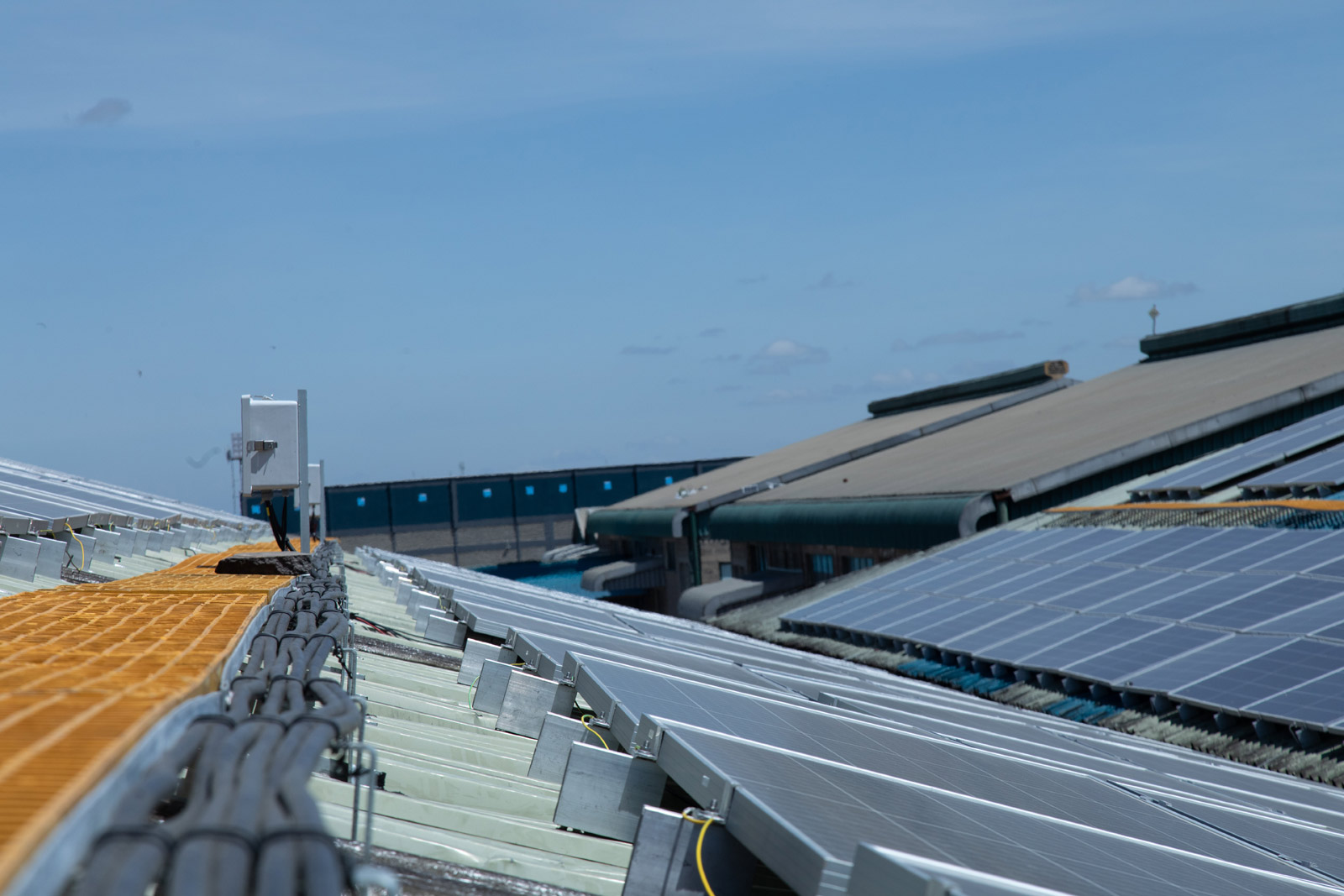
08 Oct Drive the Future of Petroleum Plants with Clean Energy Systems
The petroleum industry stands at a transformative crossroads where operational demands meet evolving environmental expectations. Refineries and petrochemical facilities consume enormous quantities of energy for processes including distillation, cracking, reforming, and product transportation. As global pressure mounts to reduce industrial carbon emissions and as energy costs fluctuate unpredictably, petroleum operators are discovering that clean energy systems offer not just environmental benefits but strategic advantages that enhance competitiveness and operational resilience.

Energy Realities of Modern Petroleum Operations
Petroleum refining ranks among the most energy-intensive industrial processes globally, with facilities consuming energy equivalent to processing millions of barrels annually. Traditional refineries rely heavily on fossil fuel combustion for process heating, steam generation, and power production, creating substantial greenhouse gas emissions that increasingly attract regulatory scrutiny and public concern. The irony of using petroleum products to refine petroleum products has not escaped industry observers or environmental advocates.
Beyond environmental considerations, petroleum facilities face significant energy cost exposure. Fuel price volatility directly impacts operational expenses and profit margins, creating financial uncertainty that complicates long-term planning and investment decisions. Facilities dependent entirely on conventional energy sources remain vulnerable to supply disruptions, geopolitical tensions, and regulatory changes that can dramatically alter cost structures. Clean energy systems provide diversification that reduces these vulnerabilities while positioning operators advantageously for future market conditions.
Solar Integration for Auxiliary Power Demands
Petroleum facilities present ideal conditions for solar energy implementation, with extensive roof areas on tank farms, warehouses, and administrative buildings plus open land surrounding installations. Solar photovoltaic systems can supply substantial portions of auxiliary power requirements including lighting, control systems, administrative operations, and certain pumping applications. This reduces grid dependency and fossil fuel consumption while providing predictable long-term energy costs.
We’ve designed solar installations for petroleum facilities that generate megawatts of clean power during peak daylight hours when many refinery operations run at maximum capacity. At Spenomatic Group, we understand that petroleum environments present unique challenges including potential flammable atmospheres and strict safety protocols, and our solar designs incorporate appropriate safeguards while maximizing energy production. The International Energy Agency projects continued cost declines for solar technology, making current investments increasingly attractive with improving economics over system lifespans.
Waste Heat Recovery Capturing Lost Energy
Petroleum refineries generate enormous quantities of waste heat from furnaces, reactors, and various thermal processes. Clean energy systems incorporating waste heat recovery capture this otherwise wasted energy for beneficial use, improving overall facility energy efficiency dramatically. Heat exchangers, organic Rankine cycle systems, and thermoelectric generators can convert waste heat into useful energy for preheating feedstocks, generating steam, or producing electricity.
Many refineries already employ some waste heat recovery, but modern clean energy systems optimize these applications more comprehensively. Advanced materials and designs capture heat from lower-temperature sources previously considered uneconomical to recover. We implement integrated waste heat strategies that identify all potential recovery opportunities and prioritize implementations based on energy value and return on investment, helping petroleum facilities extract maximum value from energy already consumed in primary processes.
Hydrogen as Clean Fuel for Process Heating
Hydrogen represents a promising clean energy carrier for petroleum operations, particularly relevant since many refineries already produce hydrogen for hydroprocessing applications. Excess hydrogen production capacity or dedicated clean hydrogen generation through electrolysis powered by renewables can supply fuel for process heaters and boilers, dramatically reducing carbon emissions while maintaining the high temperatures petroleum processes require.
Green hydrogen produced from renewable electricity via electrolysis generates zero direct emissions when combusted, making it an ideal transition fuel for petroleum facilities committed to decarbonization. While infrastructure modifications are necessary to accommodate hydrogen fuel, many burners and heating systems can be adapted relatively cost-effectively. The Hydrogen Council advocates for hydrogen as a crucial component of industrial decarbonization strategies, with petroleum refineries positioned as early adopters given their existing hydrogen familiarity.
Cogeneration Systems Maximizing Efficiency
Combined heat and power systems, often called cogeneration, produce both electricity and useful thermal energy from single fuel sources, achieving overall efficiencies of seventy to eighty percent compared to conventional separate generation approaching fifty percent. For petroleum facilities with substantial simultaneous demands for electricity and process heat, cogeneration systems powered by natural gas or increasingly by biogas represent clean energy systems delivering immediate efficiency improvements.
Modern cogeneration designs incorporate advanced turbines, heat recovery steam generators, and intelligent controls that optimize performance across varying operational demands. We’ve implemented cogeneration systems that dramatically reduce petroleum facility energy costs while cutting emissions proportionally to efficiency gains, providing immediate operational benefits while supporting longer-term sustainability objectives.
Energy Storage Enhancing Reliability
Battery storage systems and other energy storage technologies transform how petroleum facilities consume and manage electricity. Storage systems capture excess solar generation during peak production periods, storing energy for use during evening hours or cloudy conditions. They also provide backup power for critical safety and control systems, enhancing facility reliability and resilience against grid disruptions that could create hazardous situations in petroleum environments.
Energy storage enables demand charge management, where facilities discharge batteries during peak rate periods rather than drawing expensive grid power. This load shifting reduces electricity costs substantially while smoothing facility power demands. We design storage solutions sized appropriately for each facility’s unique load profiles and resilience requirements, ensuring that clean energy systems deliver both environmental and economic value.
Conclusion: Pioneering Energy Transformation in Petroleum
The convergence of solar technology, waste heat recovery, hydrogen fuel, cogeneration, and energy storage creates unprecedented opportunities for petroleum facilities to transform their energy profiles. Clean energy systems deliver measurable emissions reductions, cost savings through efficiency improvements and diversified supply, and enhanced resilience against energy market volatility. These benefits align directly with industry trends toward lower-carbon operations and prepare facilities for evolving regulatory landscapes.
At Spenomatic solar, we bring specialized expertise in implementing clean energy systems within petroleum environments where safety, reliability, and operational continuity are paramount.
FAQs
1. Can clean energy systems provide the reliable power petroleum facilities require?
Yes, properly designed systems with appropriate redundancy and backup ensure reliability. Most facilities maintain grid connections while generating significant clean energy on-site, providing multiple power sources.
2. What return on investment timelines should petroleum facilities expect?
ROI varies by technology and local conditions, but comprehensive clean energy systems typically achieve payback within five to ten years through energy savings, with many components paying back faster.
3. How do clean energy systems integrate with existing petroleum facility infrastructure?
Modern systems are designed for integration with existing operations, connecting to electrical distribution and thermal systems without requiring complete facility redesigns or extended production shutdowns.
4. What regulatory incentives support clean energy adoption in petroleum facilities?
Many jurisdictions offer tax credits, accelerated depreciation, and grants for industrial clean energy projects, significantly improving project economics and shortening payback periods.
5. Do clean energy systems require specialized maintenance expertise?
While some components require specific knowledge, most maintenance integrates with existing facility programs. Working with experienced providers ensures optimal performance and maximizes system longevity.


Sorry, the comment form is closed at this time.